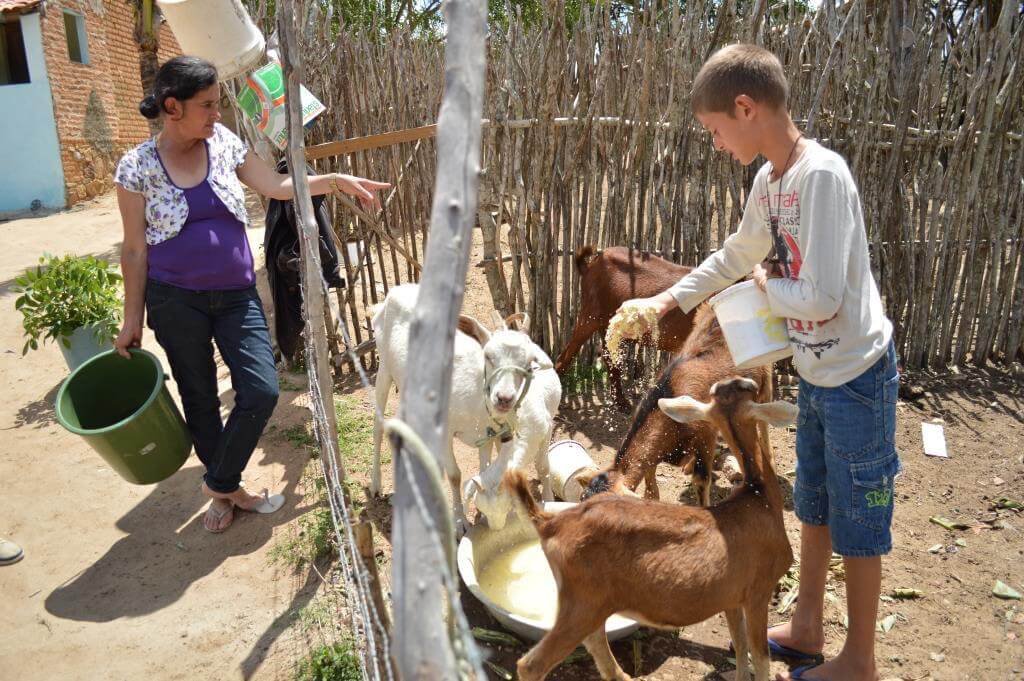Si está interesado en colaborar de estas o de cualquier otra manera le pedimos que se comunique con nosotros.
Semiarid regions
In general, semi-arid regions are those where rainfall is not enough to cover the growth needs of the vegetation all year round. That is, aridity index (rainfall/potential evapotranspiration) is below 0.5 per cent.
Tri-national Chaco
American Gran Chaco or Tri-national Chaco, is a 1,000,000 sq. km. region located in the center of South America. Argentina, Bolivia and Paraguay share this ecosystem, which is considered one of the regions with the greatest environmental and biological diversity on Earth, and the largest forest area of the continent after Amazonia.
Due to its climate, this ecosystem is divided into three sub-areas: Sub-humid Chaco, Semi-arid Chaco, and Arid Chaco.
Semi-arid Chaco, with rainfall of between 750 and 500 millimeters per year, comprising Bolivia, the west of Paraguay, and Argentina (the west of the provinces of Formosa and Chaco; the east of the province of Salta; almost all the province of Santiago del Estero; north, northeast and center of the province of Córdoba).
It is a vast plain interrupted by important watercourses and by mountain ranges with forests adapted to drought. It features continental, hot subtropical climate. Some of its areas have the highest temperatures in the continent.
The region has a really high production potential. However, this region is subject to a process of serious degradation of its natural resources and of its biodiversity. These conditions emphasize the social and economic marginalization of the indigenous communities and peasant families living there.
Area
1.000.000 sq. km.
Inhabitants
Almost 22 million
Area
1.000.000 sq. km.
Northeast of Brazil
The semi-arid region of Brazil is present in eight states of the Northeast and in Minas Gerais. It is the most populated semi-arid region in the world, with a population reaching approximately 22 million people. The prevailing vegetation is the Caatinga, indigenous name meaning “white forest” due to the whitish color typical of the periods of drought, when leaves fall.
However, this is just an ecological adaptation of the vegetation in order to lessen the amount of water lost in the dry season. Rainfall in the area ranges between 250 mm and 800 mm per year, concentrated in a short four-month period. The high evaporation rate makes the amount of evaporated water higher than the rainfall.
Dry corridor of Central America
The term dry corridor defines a group of ecosystems coexisting in the eco-region of dry tropical forest of Central America, ranging from Chiapas, Mexico, to a strip covering the lowlands of the Pacific Coastal Area and most of the central pre-mountain region of Guatemala, El Salvador, Honduras, Nicaragua and part of Costa Rica (up to Guanacaste). It also includes some areas near the Caribbean coastline.
Nowadays the forest is quite fragmented and the adverse effects of the climate are more noticeable in the living organisms and in the human population of the ecoregion. Recurrent droughts affect the dry corridor, causing social, environmental, productive and economic crises and disasters, both nationally and regionally.
800
masl
Inhabitants
1.790.000 millon
Area
30.000 sq. km.
Semi-arid region of Venezuela
The most important semi-arid region of Venezuela is the one known as Lara-Falcón semi-arid region, located in the west of the country and covering part of these two states, including some 15 municipalities with about 30000 sq. km., and 1,790,000 inhabitants, of which 288,000 (16%) live in rural areas. The vegetation comprises mainly species adapted to semi-aridity conditions, such as the thorn scrub (mainly cactus scrubs) and the deciduous forest, which are seriously endangered due to deforestation for agriculture, livestock farming and urbanization.
Regarding the agrarian structure, the prevailing unit is the traditional rural home economics, subject to the lack of water and to instability due to the recurrent droughts. The main economic activities are extensive goat production aimed mostly at their own personal use, the cultivation of species adapted to the climate, such as sábila [aloe vera], sisal and cocuy [Agave cocui] mostly harvested as wild plants, and the cultivation of vegetables with irrigation.











